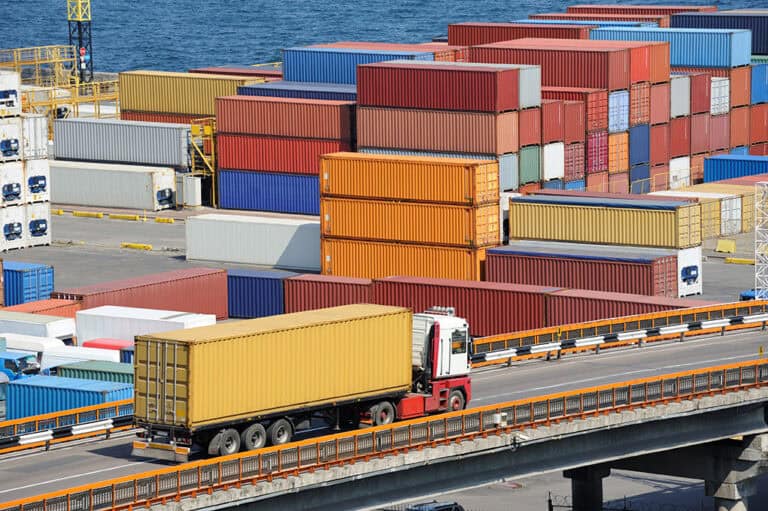
Environmental, social, and governance (ESG) topics have dominated the thoughts and minds of the investment community, board members, and executives for years. It’s not a surprise. The principles of ESG inherently lower risk and help optimize operations that support better long-term financial returns. No longer considered a “nice to have,” ESG is a key ingredient to every business’s long-term strategy and to unlocking long-term success and prosperity— including at e2open.
Understanding and executing ESG goals and objectives involves cross-functional teams from board members to data analysts, and lots of roles in between. No matter the industry, in speaking with colleagues, clients, and partners alike throughout my two-decade career in strategy, communications, and sustainability, it’s clear that many, if not most, companies struggle with:
- Prioritization
- Connecting the ESG strategy and goals to day-to-day implementation
- Silos of information and data
- Demonstrating impact and/or value to stakeholders
Despite the benefits of sound ESG practices, one of the biggest challenges is prioritization. This challenge isn’t because ESG is unimportant, but rather because it is so important yet touches many areas across each enterprise. In a resource-constrained world, which of those areas are the best starting point to invest valuable time and resources? Throw in the disparate global regulatory requirements, and there’s a recipe for chaos. These challenges are magnified and increased exponentially within the supply chain, leaving companies with analysis paralysis.
It doesn’t have to be that way. You can improve your relationship with ESG from “it’s complicated” to “married happily ever after,” but like in real life, it takes time, lots of work, and some give and take.
The best way to transform your approach is to first change the way you think about it.
You are probably already creating efficiency, optimizing your operations, and even weeding out “bad characters” in your supply chain as part of your everyday decision-making. It is essential to recognize that, to gain efficiency in your operations as well as service delivery of goods or services. You don’t have to sacrifice sustainability in the process. As a rule, optimizing your operations in various areas often drives meaningful progress toward your long-term financial stability, operational effectiveness, and your company’s ESG-related goals along the way.
It’s not a zero-sum game between your financial goals and your sustainability objectives. There are lots of opportunities for win-win decisions. Take those decisions and make them proactive rather than reactive… now we’re getting somewhere. You have moved out of the “it’s complicated” status and stepped right into relationship territory.
Bridging the Gap
Just as operational, financial, and service goals stretch across departments, ESG goals do too. Embedding the principles of an ESG strategy within your business and your culture ensures that the goals are intertwined in nearly every area of business. Bridging the gap between ESG goals and achieving them takes empowered employees and the technology that enables informed decisions.
As employees weigh everyday decisions to manage suppliers, costs, and overall efficiency, it is important to consider the negative effects and risks associated with emissions, waste, and other impacts. Technologies are the connecting thread, and capabilities such as those offered by e2open to know your suppliers and trading partners, minimize inventory footprint across tiers and stocking locations, mitigate supply risks, and boost transportation efficiency—among many other areas—help support these informed choices with decision-grade data.
Unifying Silos of Data
Responsibility and achievements for ESG-related initiatives and goals are shared and driven within each organization. But it’s important to note that it also extends beyond the four walls of the company. In other words, what’s yours is mine, and what’s mine is yours. That’s where the relationship really gets taken more seriously. Not ready for that level of commitment yet? It’s OK. Take a breath.
Achieving ESG-related goals takes shared values, mission, and matrixed thinking and understanding. With outsourced production as the norm across industries, direct visibility into the supply chain and its impacts is extremely complex. At the heart of it all is data–lots of it. The challenge is, by definition, a multi-enterprise one that requires a multi-enterprise solution. According to the Sustainability Consortium, approximately 25% of organizations have visibility of their supply chain beyond tier one. Due to the complex nature of supply chains, this is alarming as most businesses need visibility beyond tier one to achieve ESG goals and for reporting compliance.
With 65-95%1 of an organization’s carbon footprint squarely within its value chain, all eyes are on supply chain teams (e.g., procurement, manufacturing, logistics) to put the pedal to the metal to know the ins and outs of their value chain and execute on achieving ESG goals (e.g., lower emissions, diverse suppliers, etc.). That’s where e2open’s emphasis on a connected supply chain comes in. Managing connections beyond tier one is more important than ever.
Can you imagine what’s possible when you gain visibility through technology solutions, and visibility permeates all tiers? A supply chain with a multi-tier business network at the core has the ability to reduce obstacles that can eliminate the inherent disconnectedness and lack of transparency in supply chains and elevate what’s possible. The utilization of technology that tracks the flow of materials and business processes from the source through delivery to the end customer is another crucial component. Understanding your supply chain is one thing. Making that data consumable and taking actions to drive meaningful change based on that data—that’s where the magic happens, and sparks really start flying.
Measuring Impact and Long-Term Value
Measuring ESG performance against targets—especially when you already have enough data to set some targets—is straightforward, depending on the criteria. However, measuring ESG impact broadly is a tough nut to crack. It’s not easy to measure trade-offs or the impact of the choices you didn’t make.
This is why it’s important to embed ESG into your strategy and weave it throughout the enterprise. The results of progress or positive impacts cannot be achieved in a silo or with one individual. Making sure your supply chain is ready for a long-term relationship and knowing everyone is on the same page takes communication, alignment of values, and transparency. It’s truly a team effort to make it work for the long haul.
Measuring value is not only in the revenue, profitability, and reduced risk but also in the intangible value —value to employees, clients, and other stakeholders—in the form of improved processes, policies, working conditions, community and economic vitality, and even innovation. When all these things work together and are unified under common values and goals, it’s like a match made in heaven and the foundation for a marriage made to last.
We can work collectively to enable a supply chain that is smarter, more sustainable, and more resilient. It all starts with changing the way we think about ESG to create win-win opportunities and leveraging the e2open network to support and build a long and meaningful relationship with staying power.







